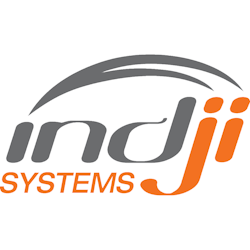The Seriousness of Ice and Wind Events
Ice accumulation on power lines can pose significant issues for utilities and their maintenance crews. When combined with high winds, the threat can become serious. Crews working near these lines risk being struck by falling ice or nearby collapsing vegetation. High winds may cause ice laden lines to gallop, and if the wind is significant, the galloping lines may collide causing faults, downed lines, possible equipment damage and sustained power outages. Problems due to ice accumulation on the electrical grid include:
- Combined impacts of ice on generation and power lines can force load shedding, impacting hundreds to thousands of households and critical businesses.
- Increased component fatigue from snow, ice and wind loads can cost millions in infrastructure replacement.
- Safety risk to employees and the public due to ice shedding, flashover events, fallen or at-risk vegetation and downed structures.
There are multiple forecasting methods. Publicly available forecasts such as television and the National Weather Services can bring awareness to precipitation based icing and freezing fog. However, they are targeted to predict ice accumulation on surfaces and roadways. Forecasts from private, commercial sources, continue to improve and new ensemble model forecasts are more accurate and can target ice accumulation forecasts at electrical conductor heights. Additionally, alerts can be issued to provide advance notice of impactful events. Larger utilities may have meteorologists on staff who can perform a deeper analysis of weather patterns and conditions to deliver a more asset specific impact forecast. This can be especially valuable for in-cloud icing events in elevated terrain areas, or localized extreme wind events. However, not all utilities have this luxury.
Types of ice accumulation, related weather conditions and properties
Precipitation-Based Icing
Precipitation-based icing occurs when supercooled water droplets from freezing drizzle or freezing rain land on surfaces with temperatures below freezing, such as power lines, structures, or tree limbs. Freezing rain poses a greater threat during light precipitation events that last more than six hours, as these prolonged conditions allow time for ice to form and accumulate. In contrast, heavy precipitation over a short duration often inhibits significant ice buildup due to the faster rate of rainfall.
Wind speed plays a critical role in the ice accumulation process. Wind speeds of 10 mph or higher lead to greater ice accretion by dispersing surface heat and UV radiation, promoting ice formation. While low wind speeds can still cause ice accumulation, the amount is significantly reduced. Furthermore, the orientation of power lines relative to wind direction affects the shape of ice buildup. In still conditions, ice forms in a teardrop shape, but when wind speeds are high, ice can accumulate in an airfoil shape, which can cause power lines to gallop. This galloping can lead to wires touching, causing faults or even prolonged outages. Additionally, the increased movement of the lines may damage cross-arms and bring power lines to the ground.
The time of day also impacts ice accumulation. There is typically a marked drop in ice buildup between noon and 6 p.m. due to solar radiation. Therefore, events occurring outside these hours are more likely to result in significant ice formation.
Wet snow can also cause icing when partially melted snow crystals stick to surfaces and freeze upon contact. If followed by a cold snap, this ice can persist for several days, increasing risks for utilities.
Precipitation-based icing, the most commonly forecasted and understood type, typically results in a clear glaze of high-density ice. Its accumulation is influenced by factors such as wet-bulb temperature, wind speed, and the rate of precipitation. Given its frequency and predictability, it remains a major concern for utility companies preparing for winter weather impacts.
In-Cloud Icing
In-cloud icing occurs when super-cooled droplets in clouds freeze on contact with transmission lines. This type of icing, common in elevated terrains, often leads to prolonged events with significant ice build-up. It poses a major challenge due to the remote locations of many transmission lines, making repairs difficult.
Indji Watch provides detailed forecasts for in-cloud icing, which can result in two types of ice: glaze (clear and dense) and rime (frosty and low density). The system issues alerts for these events, allowing operators to preemptively address risks before they escalate.
Freezing Fog and Mist: A Common but Overlooked Hazard
Freezing fog and mist, though often resulting in lighter ice accumulation, can still pose significant risks during prolonged events. Ice formation during freezing fog is common in areas with shallow arctic air masses or snow cover, with events lasting more than six hours presenting higher risks of galloping lines and equipment damage.
Innovative Solutions for Icing Mitigation
Indji Systems monitoring and alerting solutions for hazardous weather continues to lead the market with innovative solutions and delivers forecasts of icing from freezing rain and freezing fog including the delivery of SMS and email alerts to your staff. For many utilities, icing becomes more serious when combined with high sustained winds or gusts. For this reason Indji Watch has also developed notifications that combine these threats. Utilities can now be alerted up to 72 hours prior to the start of an ice accumulation event that exceeds customized thresholds for ice build-up and high wind speeds. Now utility operators and field response crews have time to prepare, and take steps to mitigate outage risk and increase safety.
Having a tool that alerts your team to extreme temperatures, ice accumulation and high winds will allow you to be proactive in your decisions to pre-position material or teams in the field, de-energize a line before equipment is damaged or prevent downed lines from posing as a safety risk.
THE INDJI SYSTEMS COMMITMENT
Indji Systems is committed to help you improve grid stability while maintaining safety. We have led the way in bringing innovative solutions to the industry for the past ten years and the introduction of in-house icing alerts continues that focus. Contact us to learn more


